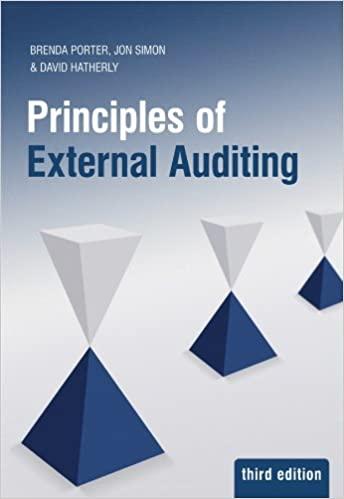


Question 1: In recent lectures we discussed the problem of GST, which is a value-added tax that is assessed incrementally at each stage of production, distribution and sale to the end consumer. In this problem we will consider alternative alternative tax regimes; the sales tax and the income tax. The sales tax has some similarities to the Australian national GST, but it is collected by the retailer when the final sale in the supply chain is reached. In the United States many states and local jurisdictions assess their own sales tax (in the U.S. there is no national sales tax or value-added tax). For example, a consumer walking into an Apple Store in San Francisco will see the price of the Apple SE labeled $ 399, but when they go to pay the Apple Store will charge them an additional $ 33.92 to cover the city and states' 8.5% tax, so the consumer will face an effective price $ 432.92 total (tourists can be surprised by this, but Australian tourists are usually happy anyway because the prices are so much lower) I assume everyone is familiar with the income tax. Before federation, the states of Aus- tralia had their own respective income taxes. The Commonwealth Government intro- duced a personal income tax in 1915 to help fund the war. In 1942, to help fund the second world war, the Commonwealth Government took over the raising of all income tax, and states were excluded from collecting income tax (in the U.S., some states assess an income tax on top the national income tax, e.g. in California has a progressive income tax with income in the top bracket assessed a 12.3% tax on top of the 37% national income tax). . For example, if LeBron James gets a $1,000,000 bonus to his income playing for the Los Angeles Lakers, he will be assessed an income tax of 49.3% and he will keep $507,000 of these earnings as after tax income. In the problem we consider whether consumers would be better off if the government raised revenue via a sales tax rather than income tax. We only begin addressing the sales vs. income tax issue here, we will not address it in its full complexity. In the problem below, you are asked to consider a model in which a consumer's preference for two goods can be represented by the following utility function: U(C1, C2) = ln(C) + In(C2) (1) The prices firms list for the two goods are given by Pi and p2 respectively. The consumers income in a year is given by I, there is no savings. (a) (1 mark] Write down the consumer's budget constraint for the year if the government were to tax income at a rate of t per dollar earned with 0









